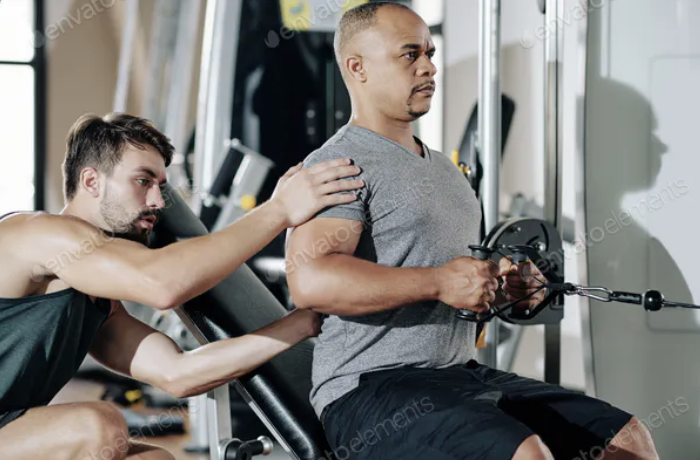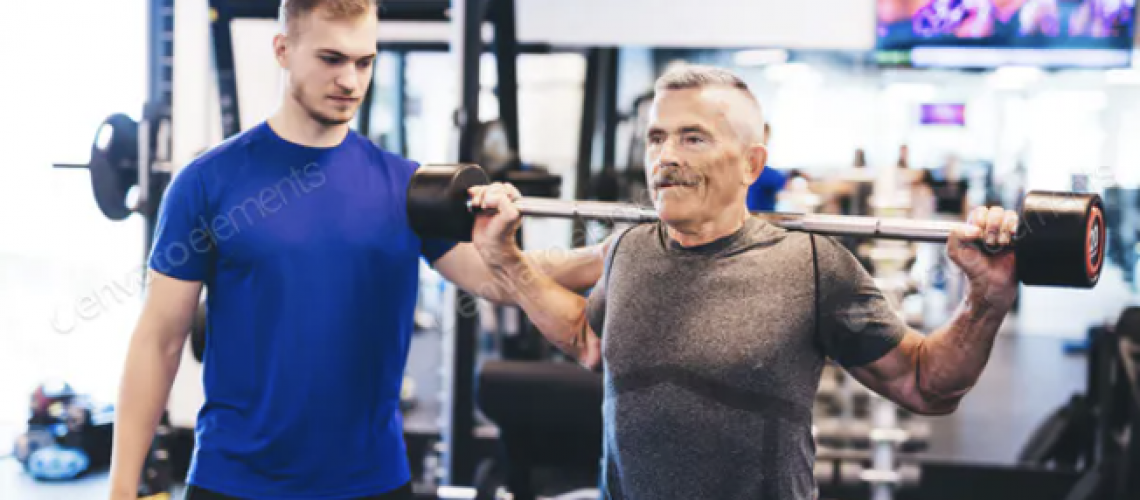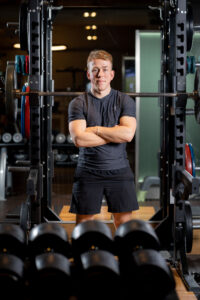Resistance Training is a way of life for many people. It provides tremendous benefits, both physically and mentally, and the desire to continue it for as long as possible is a common one. However, as you increase in age, there is also a concern that the quality and frequency of your training will decrease.
Do you have to lower the number of sessions you do each week? Will your strength levels decrease? Does the intensity of your sessions have to decrease? Are you more prone to injury? These are all frequently asked questions from those aged 40 or over or those heading towards that age bracket.
So, what needs to change? What things should you look out for when you start or continue training at the age of 40 or above?
Warm Up Slowly and Effectively
Before you start to lift any weight, it is very important that you perform warm-up exercises, even more so when you are older. The best you can do are usually dynamic stretches, which are active movements where joints and muscles go through a full range of motion. The dynamic stretches that you will perform depend on the muscle groups that you will be targeting during the session, but these will increase the blood flow to your muscles so that they are ready and warm for the session.
How long you warm up for will depend on you and any history you have with injuries. However, shoulder and elbow issues are common with people over the age of 40, so aim to allocate five to ten minutes for a good, effective warm-up before you move into your workout. The tempo and intensity at which you do your warm-up sets are also going to be very important. Many people make the mistake of trying to lift a certain weight as quickly as possible in order to get stronger and burn lots of calories quickly. This will encourage your body to move into sudden, unnatural positions, which can often lead to muscle strains, injuries, or even something more serious. Make sure that the tempo of the movement is slow and controlled. By doing this, your body will be in a much safer position and you will be able to train more effectively.
Prioritise Exercise Technique

One of the most important things to get right during your resistance training sessions is technique. Many people perform exercises without knowing the correct way to execute the movement and instead focus on just lifting the weight up, whatever way they can. Before you start to lift heavier, you need to be able to execute the exercise correctly, for two main reasons. The first is so that you are properly working the muscle(s) you want to target. If you are not focusing on maximum time under tension, the muscle breakdown during your sessions will be limited and you will see very little, if any progress.
The second reason is so that you avoid injury. If you are performing an exercise incorrectly and then add weight on top of that, you are going to put your body under a lot of strain and increase the risk of doing serious damage to yourself. This is particularly relevant to compound movements (heavier, more demanding lifts, such as the deadlift, squat, bench press, overhead press, and barbell row) that hit multiple muscle groups and work the body harder. Practice good form with your own bodyweight and then a much lighter weight before you increase how much your lift. This is essential to avoiding injury.
Gradually Build Up Strength
A very common mistake people make during resistance training is that they try to lift too heavy, too early. Even if you have mastered the execution of a particular exercise, if you try to lift a weight that is too heavy for you, you are going to put your body under enormous strain. Furthermore, if the weight is too heavy, you could put yourself in dangerously awkward situations where you are not able to complete another repetition and have to drop out of the set, midway through.
For people over the age of 40, you may struggle to shift the weight that you were lifting when you were younger, so it is important to drop your ego and build up slowly. It is still very impossible to increase your strength as you get older, but you must realise that this may take longer, depending on your experience levels and the structure of your body. If you are a beginner, aim to start with some isolation exercises to build up strength in specific muscle groups. If you are more experienced and stronger, work on improving your compound movements, which are vital for increasing strength in the whole of your body. So, take your time with the weight, start what you are comfortable with and gradually work up. This will make your workouts safe and effective.
Do Not Train Through Pain

When you are older, a big difference you will notice is the quality of your recovery. Of course, the healthier, fitter and stronger you are, the more you can limit the number of issues to do with aging, however it will take longer for your body to recover from a session, a niggle and/or an injury than when you were younger. So, it is vital that you listen to your body and do not try to overwork yourself, particularly when you feel that something is physically not right.
How you approach this depends on you, what shape you are in, how long you have been training and how serious the niggle or injury is. If you feel pain in a certain area of your body, the best thing you can do is rest it, train around it and let it heal. Your muscles and bones are more vulnerable when you are older, so it is vital that you pay extra attention to their safety and wellbeing. This will ensure that you stay on track with your training and fitness goals.
Variety With Exercises
You may have got into a routine of doing the same exercises for the same muscle groups during each of your sessions, particularly during lockdown. Given the limited equipment at your disposal, this is understandable, and there has most likely not be much you have been able to play around with. For some, with more equipment such as barbells and dumbbells, it will have been easy to find exercises for your sessions. However, it is important to vary up your sessions from time to time so that you avoid pattern overload injuries, which can occur when you repeat certain exercises for a long period of time.
Varitey can come in many different forms – it does not mean that you have to suddenly change to lots of different exercises. Variety could mean changing the intensity of your sessions, adjusting the angle at which you perform certain movements or changing the volume of sets that you do during a workout. Aim to prioritise strength with heavy, demanding compound lifts at the start (as long as you are able to perform them with stabily and balance), as they are the exercises that provide the most value, but also add in some machine isolation work so that your sessions are safe, balanced, enjoyable, and effective.
Summary
So, for those who training or want to train at the age of 40 and over, there is not a huge amount that has to change. However, there are some slight adjustments you can make that will make a difference, such as warming up well, prioritising exercise technique, gradually building up strength, not pushing through pain and having variety with exercises. Make sure you stay consistent with these points, and you will find that you can train as safely and effectively as you did when you were younger.
Photo Credit: Envato Elements


